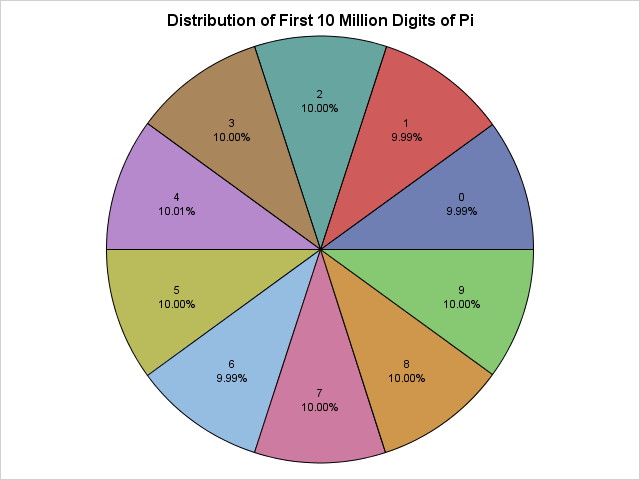One thing that always puzzled me when starting out with data quality management was just how difficult it was to obtain management buy-in. I've spoken before on this blog of the times I've witnessed considerable financial losses attributed to poor quality met with a shrug of management shoulders in terms
Uncategorized
Für mich war es als Kind in Wien komplett unverständlich, warum das „H“ auf den deutschen Autokennzeichen nicht für eine berühmte Stadt wie Hamburg, sondern für irgendeine, für mich komplett unbekannte Stadt wie Hannover stehen sollte. Und ganz ehrlich; ich habe es den Freunden meiner Eltern aus Deutschland auch lange

“Dear Cat, I got an email from my IT department that says: [We are nearing capacity on the Flotsam Drive. Please clear data from any folders you are no longer using so we can save disk space. Thanks, The IT Department] Doesn’t this strike you as a bit old-fashioned? I
Imagine that you have one million rows of numerical data and you want to determine if a particular "target" value occurs. How might you find where the value occurs? For univariate data, this is an easy problem. In the SAS DATA step you can use a WHERE clause or a

When do analytics really provide value? All the time, of course. However, one of the best times for analytics to prove their value is when you are asked to do more with less. Often, the reason we are asked to do more with less is because of an economic downturn
.@philsimon looks under the hood of 'analytics.'

Which is more important - having beautiful graphs, or accurate graphs? Let's explore this question using the locations of the world's richest billionaires... I recently saw a beautiful map on dadaviz.com that purported to show the cities with the most billionaires. Here's a screen-capture of that map: I decided to
Ich gestehe, das hat mich überrascht. Eine Messe in der Idenitätskrise zwischen Consumer-Gadget-Show und Business-Optimierungskonferenz lädt den "bekanntesten Whistleblower der Welt" (http://www.cebit.de/) zu einer Liveübertragung ein. Was will die CeBIT damit erreichen - und was wird sie damit erreichen? Nach den harten Formulierungen von Sascha Lobo zum Thema Bullshit (http://www.spiegel.de/netzwelt/web/kommunikation-im-internet-sascha-lobo-ueber-netz-bullshit-a-1022976.html) muss
I know what you did last summer. If it was unintentional, then you probably don't know what I am talking about. If it was intentional, then you probably thought that I would never find out. Either way, the damage is done. The actions that you took on that warm summer

With any software program, there are always new tips and tricks to learn, and nobody can know them all. Sometimes I even pick up tips or techniques from my students while they’re learning broader programming tips from me. Like fine wine, instructors only get better with age. Every customer interaction

This article show how to run a SAS program in batch mode and send parameters into the program by specifying the parameters when you run SAS from a command line interface. This technique has many uses, one of which is to split a long-running SAS computation into a series of

Companies have become obsessed with product quality – and for good reason. Customer dynamics, their willingness to expose product quality issues socially on the web, and the ease with which they can jump to competitive products make quality a more important differentiator than ever before. Over the past 15 years,

With Pi Day coming up on 3/14, I wanted to make sure all you SAS programmers know how to use the pi constant in your SAS code... All you have to do is use constant("pi") in a data step, and you've got the value of pi out to a good many decimal places

England’s shambolic early exit from the Cricket World Cup has stirred up a hornet’s nest about the team’s supposed over-reliance on data. In the aftermath of their defeat to Bangladesh, coach Peter Moores said: ‘We thought 275 (runs) was chaseable. We’ll have to look at the data.’ It prompted outrage from
Are you heading to the ENAR 2015 Spring Meeting in Miami this week? SAS author and Program Chair Mithat Gönen, of Memorial Sloan-Kettering Cancer Center, and Associate Chair Brisa Sánchez, of the University of Michigan School of Public Health have created an outstanding scientific program this year. The sessions cover
Big Data schwirrt weiter durch unseren Alltag. Versprechungen von neuen bahnbrechenden Möglichkeiten wechseln sich dabei ab mit Horrorszenarien, die uns die gläserne Zukunft androhen. All dies läuft verstärkt unter der Überschrift Digitalisierung ab, als ob wir nicht schon seit etlichen Jahren alle möglichen digitalen Werkzeuge nutzen, um effizienter zu werden.

Downstream data have been electronically available on a weekly basis since the late 1980s. But most companies have been slow to adopt downstream data for planning and forecasting purposes. Let's look at why that is. Downstream data is data that originates downstream on the demand side of the value chain. Examples

Saturday, March 14, 2015, is Pi Day, and this year is a super-special Pi Day! This is your once-in-a-lifetime chance to celebrate the first 10 digits of pi (π) by doing something special on 3/14/15 at 9:26:53. Apologies to my European friends, but Pi Day requires that you represent dates

Two popular SAS custom tasks have recently been updated for SAS Enterprise Guide 7.1. Most custom tasks that I've shared will work without modification across releases, but these two required a special rebuild due to some internal product API changes. The Project Reviewer task allows you to see a detail
The data lake is a great place to take a swim, but is the water clean? My colleague, Matthew Magne, compared big data to the Fire Swamp from The Princess Bride, and it can seem that foreboding. The questions we need to ask are: How was the data transformed and

The Internet of Things is coming fast and furious. We clearly know what these “things” are, and were able to see prototypes at last week’s Mobile World Congress (MWC) which hosted some 93,000 attendees. Things = connected life = cars, homes (thermostats, washer and dryers, vacuum cleaners, security systems, refrigerators, etc.),
The ability to do things on the go – email, tweet, listen to a podcast, find a restaurant or ATM – are things we all do all the time, as adults. This instant access to the Internet and apps allows us to be more productive with our time and make

My colleague Charlie Chase, Advisory Industry Consultant and author of the book Demand-Driven Forecasting, has developed a new course for the SAS Business Knowledge Series (BKS): Best Practices in Demand-Driven Forecasting. The 2-day course will be offered for the first time April 20-21 in Atlanta (and then again September 24-25 in Chicago). From the

Innovation within hospitality drives awareness, service delivery, guest engagement, and brand differentiation. SAS asked a panel of experts to comment on how innovation is shaping the hospitality industry. According to many of our experts, analytics is at the heart of innovation. Learn more in this white paper on building

I just found out that Girl Scout cookies haven't changed from when I was a kid. I just moved to a different area, serviced by a different cookie maker! That's what I found out from the cool map in an article on latimes.com! The article explains that there are two different

Sometimes I get contacted by SAS/IML programmers who discover that the SAS/IML language does not provide built-in support for multiplication of matrices that have missing values. (SAS/IML does support elementwise operations with missing values.) I usually respond by asking what they are trying to accomplish, because mathematically matrix multiplication with
Cyber Kriminalität - Ganz früher war die Welt einfach. Der gemeine Neandertaler brauchte nur visuelle Analytik, um zu erkennen dass sein gegenüber mehr Fleisch erbeutet hatte als er selbst. Der Griff zur Keule war dann nur ein offensichtlicher nächster Schritt. Genauso einfach war damals Verbrechensbekämpfung. Auch hier spielte die vorgenannte

Today in manufacturing there has been a lot of investment in automation, supervisory controls, quality, and execution systems. The amount of data produced and now being captured is staggering. The data captured in industry will re-define what is “big” in big data. Yet, for all this investment: Equipment still fails. Scrap
In my last two posts, we concluded two things. First, because of the need for broadcasting data across the internal network to enable the complete execution of a JOIN query in Hadoop, there is a potential for performance degradation for JOINs on top of files distributed using HDFS. Second, there are

“When it comes to the Internet of Things, the future clearly belongs to the Things”. I made this brash statement in a previous post (“Cloud encounters of the Fifth Kind”) referring to machine-to-machine (M2M) being the fastest growing component of non-human traffic on the Web. I say “brash” because that
























